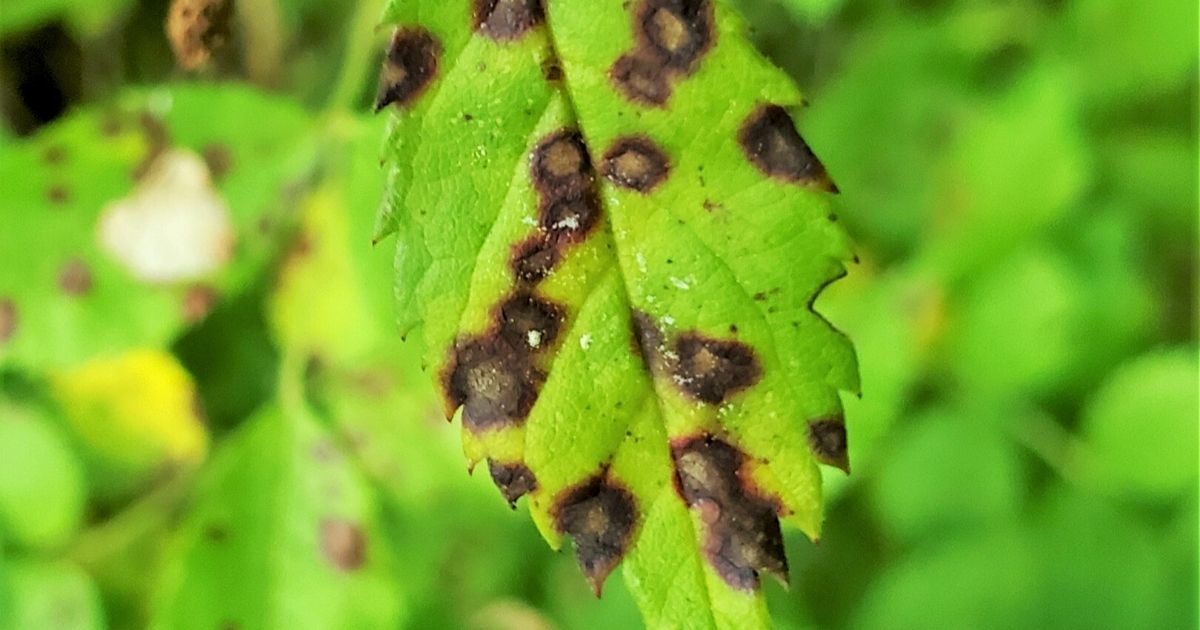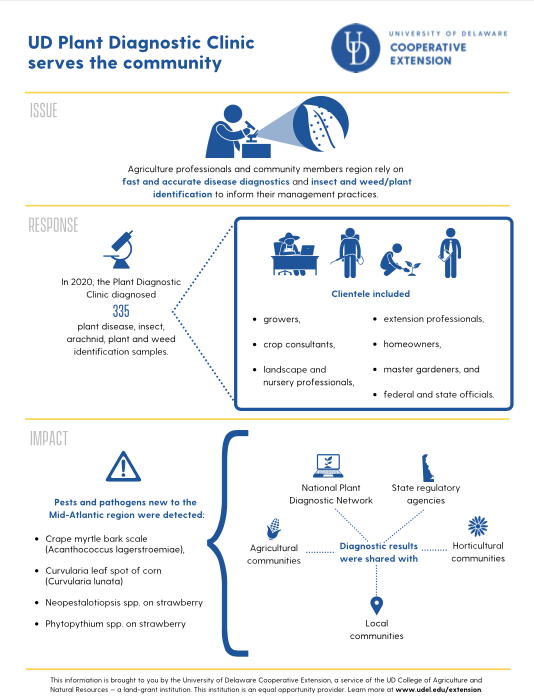
UD Plant Diagnostic Clinic serves the community (2020)
- Health & Well-being
-
Agricultural Programs
- Agribusiness
- Animal Science
- Beginning Farmer Program
- Commercial Crops
- Commericial Horticulture
- Delaware Soil Testing Program
- Disease Management
- Farm Vitality and Health Project
- Irrigation
- Nutrient Management
-
Insect Pest Management
- Insect Trapping Program
- IPM Hot Topics
- Commercial Field Crop Insect Management
- Commercial Field Crop Disease Management
- Commercial Fruit & Vegetable Crop Pest Management
- EIPM Implementation Projects
- Pollinators
- Research and Extension Demonstration Results
- Brown Marmorated Stink Bug (BMSB) Management, Research, and Resources
- Publications
- Pesticide Safety Education Program
- UD Plant Diagnostic Clinic
- Variety Trials
- Weed Science
- Certified Crop Advisor Program
- Poultry Biosecurity
- 4-H
-
Horticulture
- Climate Variability and Change
- Delaware Soil Testing Program
- Forestry
- Lawn and Garden
- Master Gardeners
- Master Naturalist Program
-
Nutrient Management
- Nutrient Management Certification
- Continuing Education for Nutrient Management
- Nutrient Management Planning Resources
- Commercial Nutrient Handler Resources
- Poultry Litter and Manure Management
- Turf Management
- Agriculture Notebook
- Horticulture Handbook
- Agriculture & Horticulture Handbooks
- Crop Production
- Soil Fertility
- Delaware Climate Change Coordination Initiative (DECCCI)
- Salt Impacted Agricultural Lands

UD Plant Diagnostic Clinic serves the community

ISSUE
Farmers, home gardeners, agribusiness clientele, landscapers and other community members in the mid-Atlantic region experience issues with their crops and plants and need to know what pathogen, insect, or abiotic issue they have and what management practices to take. It is necessary to provide Extension Specialists, commercial businesses and private citizens with fast, reliable and accurate disease diagnostics and insect and weed/plant identification, so they can best manage disease and pest issues.
RESPONSE
In 2020, the Plant Diagnostic Clinic diagnosed 335 plant disease, insect, arachnid, plant and weed identification samples. The majority of samples submitted, 293, were for disease diagnostics. Clientele included growers, crop consultants, landscape and nursery professionals, extension professionals, homeowners, master gardeners and federal and state officials. Sample results and control measures were communicated with clients in a timely manner. Diagnostic consultants included faculty and staff specializing in entomology, agronomy, horticulture, nutrient management, turfgrass science, soil science and plant pathology.
IMPACT
The Plant Diagnostic Clinic is a vital resource for Delaware agriculture and horticultural industries and the community. People depend on this service for reliable and timely disease and pest diagnostics and for accurate and up-to-date management strategies. Of the 335 samples received in 2020, new pests and pathogens to the region were detected by the Plant Diagnostic Clinic: crape myrtle bark scale (Acanthococcus lagerstroemiae), Curvularia leaf spot (Curvularia lunata) of corn, Neopestalotiopsis spp. on strawberry and Phytopythium spp. on strawberry. Diagnostic results were shared with the National Plant Diagnostic Network, state regulatory agencies, agricultural, horticultural and local communities as needed and through extension outreach events. Client testimonials and replies indicated that the work done in the clinic was well-received and supplied people with the information, tools and strategies needed to remedy their disease, pest, weed and abiotic issues.
The University of Delaware is an Equal Opportunity Institution and Provider. Visit UD’s Office of Equity & Inclusion to learn more.
Additional Links
531 South College Avenue Newark, DE 19716 (302) 831-2501
